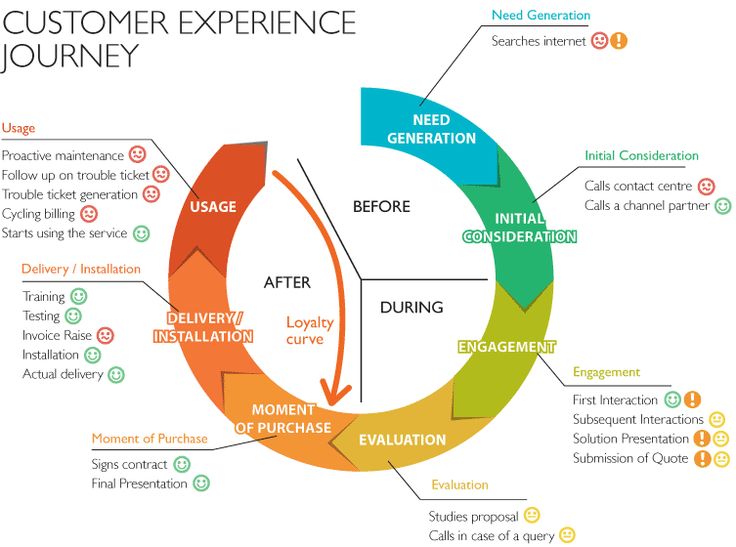The secrets to better customer experience management

The secrets to better customer experience management
Customer experience management is exactly what it says on the box. Your ability to manage your customer’s experiences throughout their lifecycle. It’s the ability to oversee, track and optimize their experiences to foster loyalty, referral and boost incremental sales.
Good customer experience management is not an accident, it’s something that needs planning, commitment and investment in the right tools and people.
Without a customer journey map you’re shooting in the dark.
Before you can optimise your customer’s experience, you first need to understand their journey. From the moment your customers first see your logo, hear your name or touch your product they are forming an opinion about you, your brand and your service.
A customer journey map delves into every touch point the customer has with you at each stage of their lifecycle. Done well it can reveal real or potential pain points on their journey.
When creating your customer journey map, make sure to include every channel they are exposed to including your website, phone calls, Live Chat, social media, service centres and even your delivery agents such as Toll or Australia Post.
A simple key using red, green and amber can highlight areas where you’re providing first-class customer experiences and where you need more work.
Image: The Interaction Design Foundation
Develop the metrics to keep their experience on track
Any work in the field of customer satisfaction or customer experience is worthless unless it can be tracked, monitored and reviewed. Customer Experience metrics such as Customer Satisfaction (CSAT), Net Promoter Score (NPS) or Customer Effort Score (CES) can give you an overview of how you’re doing but don’t forget to create metrics for each of your channels. These are more likely to give you actionable insights to improve the overall customer experience.
For online member centres you can measure number of times a customer logs in, monitor their intent and measure task completion.
For call centres, metrics such as queue time, abandon rates and First Call Resolution (FCR) can give you clues to the experience your customers are having.
Invest in the tools to deliver personalised interactions
Successful customer engagement often comes down to remembering your team are humans that are talking to other humans.
Don’t make the mistake of thinking of your customers as numbers. They are people who want to connect with other people.
With the ability to track and record buckets and buckets of customer data it’s important to have a robust Customer Relationship Management (CRM) system that will integrate with you website, call centre software, POS and any other customer facing tools you use.
This will give you agents and customer service staff the ability to see at a glance the customer’s name, location and how they have previously interacted with the business. For example, how often they visit your website, which pages did they look at, when they last talked to you on the phone, what is their purchase history as the details of any complaints or queries they’ve made.
Armed with this information your team can treat your customers as respected friends, not just another call.
Invest in the tools that resolve issues faster
Your call centre is likely to be your single, busiest customer service point. It’s also a channel that many customers loathe to use. Call centres struggle with a reputation for making callers wait, confusing them with long IVR menus, demanding they prove their identities over and over and then transferring callers numerous times until their issue is resolved.
The good news is that with these kinds of expectations, a fast functioning, friendly and efficient call centre will surprise and delight your customers.
To deliver a better customer experience on the phone look for call centre technology that enables priority calls. With automatic number recognition your VIPs can skip the queue and be sent straight to an agent. The agent will be provided with all pertinent customer information and can begin resolving their query immediately.
If your team manages incoming and outgoing call, consider a blended dialler so that incoming calls are prioritised, meaning less wait time for your existing customers.
Keep the experience consistent between channels
No matter where your customers contact you – on social media, in person, or on the phone – they expect your brand proposition and personality to be consistent. If one channel is clearly outsourced to a third party or it’s tone of voice is different, it will reflect badly on your brand as a whole.
For the past year Medibank has been on a mission to improve it’s customer experience after complaints sky rocketed. While some of the issues were to do with the complexity of their service offering, other issues were to do with customers inability to manage their accounts online and through the call centre. To put it simply; their digital channels were creating a bad customer experience across the whole business.
To address the issues, Medibank upped its digital game investing in self-service apps, simplifying their online membership portal and introducing Live Chat on their website. All this has helped reduce call wait times in their call centres from 6 minutes to 3 minutes and greatly improved their first call resolution. In speaking to CMO, Medibank CEO, Craig Drummond, said, “Accelerating the use of digital in all types of digital interactions, (allows) contact centre and retail teams spend more time servicing our customers.”
Structuring your team to deliver a better experience
Giving employees more authority can feel uncomfortable, but without authority your customer service staff might as well be robots. How good is a customer’s experience if their call needs to be transferred, when they’ve already queued for 15 minutes.
Southwest Airlines famously empowers all their staff to make judgement calls (within boundaries) without having to refer customers to supervisors. The results have become legendary, with one staff member hand delivering cancer meds for a passenger whose luggage had been delayed, to a flight attendant who taught a passenger how to use the intercom so he could propose mid-flight.
Building a customer-focused culture is the glue that keeps it all together
As they say at Southwest Airlines “We are a customer service company that just happens to fly planes.”
Empowering staff is one step in providing a better customer experience, but hiring the right staff is also important. As Teresa Laraba from Southwest Airlines says, “We will not hire a person who isn’t friendly but has been in the industry for 20 years.”
Medibank too is building a customer-first culture, not just in their call centre and customer service outlets. All non-customer facing staff are required to have 30 contact hours with customers every year, ensuring that the customer is front of mind throughout the business.
Customer engagement management is not just a responsibility for your customer service team but an enterprise wide project. As long as you have the right people and tools to deliver your promises to your customers, they will feel loved and remain loyal.


